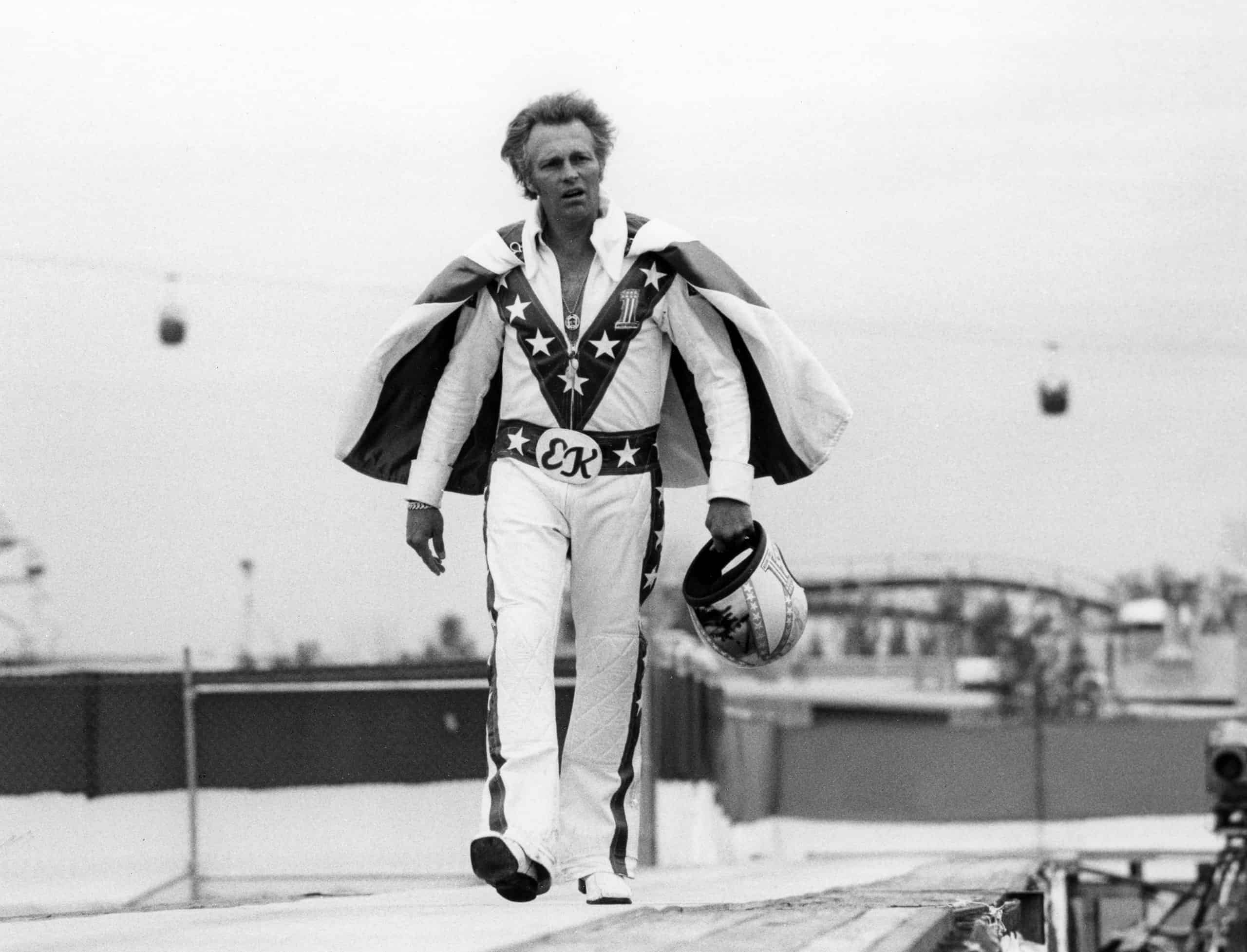
Robert Craig Knievel was born in the copper-mining town of Butte, Mont., and was raised by his grandparents. He acquired the name Evel as a boy after being arrested for stealing hubcaps. He was then taken to jail, where the police were holding a man named Knofel, whom they called “Awful Knofel” and decided to call Robert “Evil Knievel.” The name stuck, and some years later, Knievel legally took the name Evel, changing the “i” to “e” because, he said, he thought it looked better.
When he was 27, he became co-owner of a motorcycle shop in Moses Lake, Wash. To attract customers, he announced he would jump his motorcycle 40 feet over parked cars and a box of rattlesnakes and continue on past a mountain lion tethered at the other end. Before 1,000 people, he did the stunt as promised but failed to fly far enough; his bike came down on the rattlesnakes. The audience was in awe.“Right then,” he said, “I knew I could draw a big crowd by jumping over weird stuff.”
In 1965 he formed a troupe called Evel Knievel’s Motorcycle Daredevils and began showcasing across the Western states. He later began performing alone and hit the big time in 1968 with his much-publicized jump over the fountains at Caesars Palace.
“It was terrible,” he said afterward. “I lost control of the bike. Everything seemed to come apart. I kept smashing over and over and ended up against a brick wall, 165 feet away.”
The accident left him with a fractured skull and broken pelvis, hips and ribs. He was unconscious for a month. Shortly after his recovery, he jumped 52 wrecked cars at the Los Angeles Coliseum. (In 1989, his son Robbie, who also became a motorcycle stuntman, tried the same jump at Caesars Palace and succeeded.)
In 1974, Knievel decided he would jump 1,600 feet across the Snake River Canyon in Idaho. Before thousands of spectators and thousands more on a closed-circuit television broadcast, he took a rocket-powered motorcycle up a 108-foot ramp at 350 miles an hour and soared some 2,000 feet over the canyon floor. He made $6 million for the failed attempt due to a prematurely opened parachute, but escaped without serious injury.
The next year he went to London and jumped his motorcycle over 13 double-decker buses at Wembley Stadium and crashed there, too, breaking his pelvis, vertebrae and hand. He soared over an aquarium tank containing 13 sharks in Chicago but skidded on the exit ramp and fractured his right forearm and his left collarbone.
Typically dressed in star-spangled red, white and blue suit, Knievel’s showmanship, skill and disdain for death were so admired that he became a folk hero continuing to win fame and fortune by getting huge audiences to watch. In the 1970s and ’80s, Evel Knievel toys had sales in the hundreds of millions for Ideal and other companies.
In 1977, Knievel was convicted in California of beating his former press agent with a baseball bat and sentenced to six months in a jail. The conviction had a devastating effect on sales of Evel Knievel toys. Knievel was forced to spend the entire six months in prison after a judge learned that Knievel, under a work-release program, was commuting from prison to his job in a chauffeur-driven Stutz convertible and providing other inmates with limousine transportation to their work-release jobs.
A week before his release in 1978, he told an interviewer: “Last year at this time, I had 16 boats, three of them yachts, with the value of about $5 million. I’ve had to sell them all with the exception of three speedboats and one 80-foot yacht. I only have two houses left. I had to sell five mink coats.” He added, “Things are tough, but I think I’ll make it.
“I am a guy who is first of all a businessman,” he said. “I’m not a stunt man. I’m not a daredevil. I’m” — he paused — “I’m an explorer.”
Evel Knievel was the Elvis of Stunt riding. Whenever there was a televised event, people would crowd around their television sets in anticipation of the jump…and yup I received the action figure, motorcycle and Evel Knievel Sports Camper one Christmas from Santa Claus.

Recent Comments